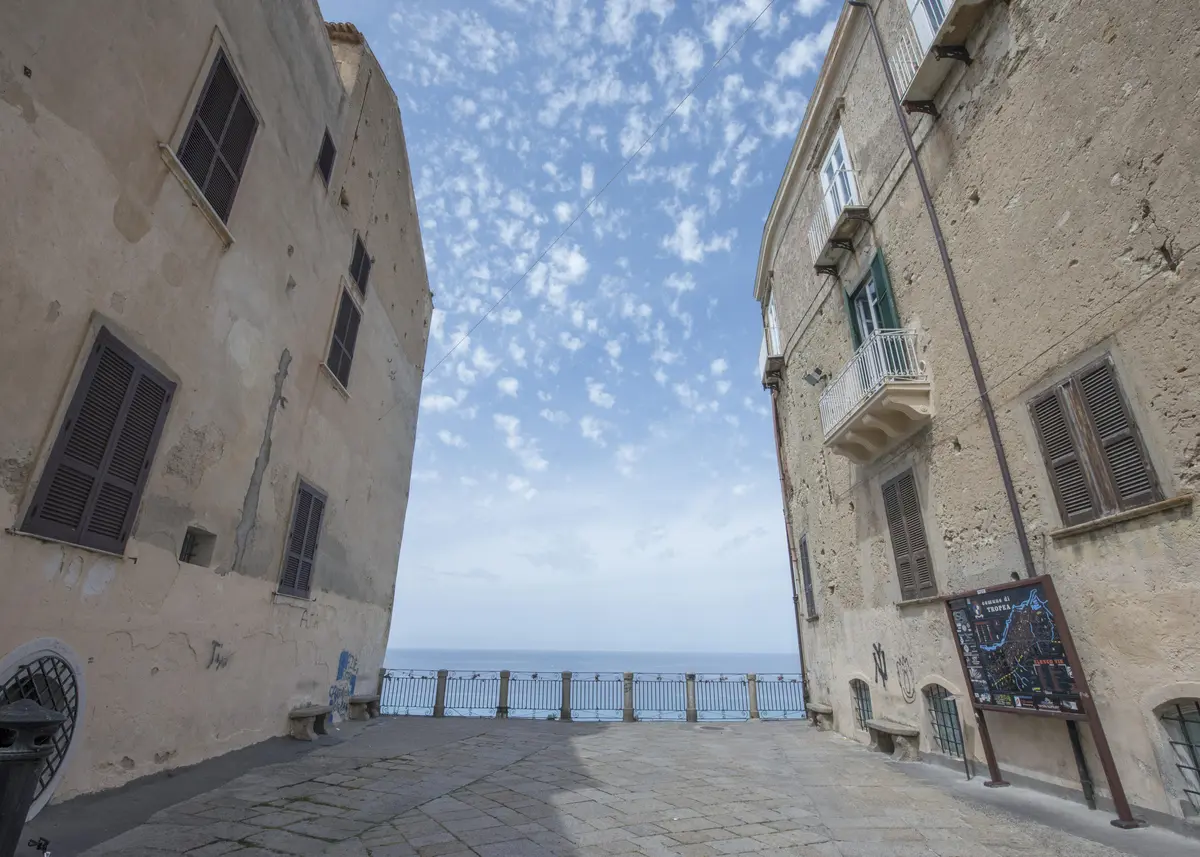Cathedral of Maria Santissima of Romania

Place of worship
Cattedrale di Maria Santissima di Romania, Tropea - Luca Fregola
The Cathedral of Maria Santissima di Romania, or the Cathedral of Tropea, is one of Calabria's most fascinating places of worship in the historic centre of one of Italy's Most Beautiful Villages.
Dedicated to Our Lady of Romania, the city's patron saint, Tropea Cathedral is a basilica-shaped building with three naves, divided by octagonal pillars in polychrome ashlars, in the Romanesque-Norman style. It was built in 1163 and remodelled several times over the centuries until the twentieth-century restoration that erased all traces of the original style.
The main entrance opens onto the façade, with a beautiful portal in tuff stone. The north side is the original one from the Norman period, with a second, smaller portal, preceded by four steps and surmounted by a stone sculpture reproducing the painting of the Madonna of Romania.
The icon of the patron saint is placed on the high altar: a marvellous representation of the Giotto school, painted on cedar wood in the 13th century and considered miraculous by local devotion.
The Cathedral of Maria Santissima di Romania houses numerous works of art inside: the Carrara marble statues of the Madonna of Liberty (17th century), and the Madonna del Popolo (1555); an 18th-century polychrome marble pulpit with a bas-relief of the Nativity (1600); the marble high relief of the Resurrection of Jesus attributed to the school of Antonello Gagini (Renaissance).
The Chapel of the Sacrament, surmounted by an 18th-century dome, houses canvases from the Grimaldi workshop on the martyrdom of St Domenica and Diocletian. Along the same nave, the sarcophagus of the Cazetta family (16th century) and the Galluppi Chapel (1599).
During archaeological excavations in the summer of 1980, an Early Christian Necropolis with more than 50 ‘a cupa’ tombs came to light under the pavement of Largo Duomo.




